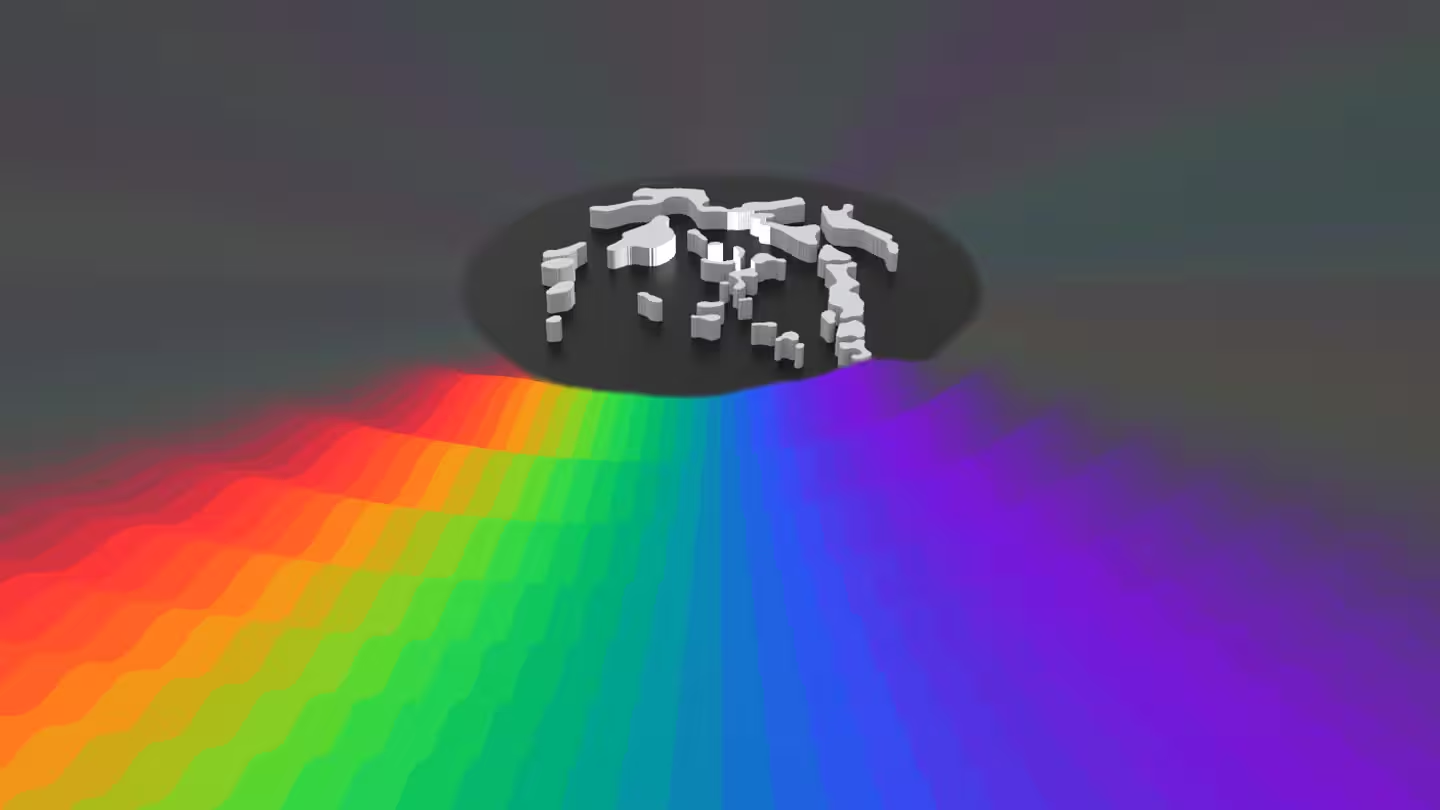5 Minutes
Acoustic rainbow: turning white noise into ordered pitches
A compact plastic device developed by researchers at the Technical University of Denmark channels different frequency components of white noise into distinct spatial locations, producing what the team calls an acoustic rainbow. Much like an optical rainbow disperses visible light into separate colors by wavelength, this device separates sound waves by pitch so that specific frequencies are amplified at particular positions around the structure.
The work, reported June 13 in Science Advances by a group including physicist Rasmus Christiansen, offers a new tool for manipulating acoustic fields at small scales. The prototype is roughly the size of a human outer ear and was 3D printed after the team used advanced computational methods to refine its complex internal geometry.
How the device works: physics, design, and experiments
Sound is a wave phenomenon; different pitches correspond to different wavelengths. The acoustic rainbow relies on carefully arranged, irregular pillars inside the shell. Those pillars scatter and reflect incoming waves so they cross and interfere. Wave interference can amplify (constructive interference) or reduce (destructive interference) sound at specific points. By engineering where and how that interference occurs, the device concentrates particular frequency bands at different locations, creating a spatial mapping of pitch.
A central sound source in the prototype emitted tones in the 8 to 13 kilohertz range — frequencies well above the highest piano note and toward the upper end of human hearing. Focusing on high frequencies let the researchers keep the device small; producing the same spatial separation for lower frequencies would require a larger structure because longer wavelengths need more physical space to be manipulated.
Inverse design and prototyping
Designing a structure that produces a target sound field is a complex inverse problem. Instead of guessing a shape and testing it, the team used inverse design: a computer model predicts the acoustic field generated by a candidate geometry, compares that field to the desired spatial separation of frequencies, and iteratively adjusts the geometry until the simulated output matches the goal. After optimization, the final geometry was realized with 3D printing and validated in laboratory measurements. Christiansen noted that the internal pillars look irregular or even chaotic, but this apparent randomness is the result of precise optimization to meet the acoustic objectives.
Potential applications, limitations, and future prospects
Acoustic control at this level could be useful in several areas: targeted room acoustics, where specific frequencies are routed into absorbers to reduce reverberation; spatial audio rendering for immersive sound systems; noninvasive acoustic sensing; and laboratory devices that require frequency-selective delivery of sound. Because the present prototype operates at high frequencies, its immediate applications are likely in domains where those frequencies are relevant, such as ultrasonic inspection or precise audio research.
Scalability remains a challenge: handling lower-frequency sounds means larger devices, and real-world environments add complexity such as reflections, moving sources, and background noise. Nonetheless, the combination of inverse design, additive manufacturing, and wave physics opens a path for customized acoustic devices that can shape sound fields in ways not achievable with conventional materials.

Expert Insight
Dr. Elena Marquez, an acoustic engineer at a European research institute (not involved in the study), commented: 'This work demonstrates how computational design can produce geometries that would be unintuitive to human designers but highly effective acoustically. The next step will be testing robustness in realistic rooms and extending the approach to broadband or lower-frequency regimes.'
Conclusion
The acoustic rainbow device illustrates a novel method for spatially separating sound by frequency using inverse design and 3D printing. By steering different pitches to different locations through controlled interference, the prototype opens new possibilities for sound control, immersive audio, and precision applications that require spatially selective acoustic delivery. While current demonstrations focus on high frequencies to keep the device compact, future work may expand the concept across broader bands, integrate adaptive elements, and adapt the approach to practical acoustic engineering tasks.
Source: snexplores


Leave a Comment